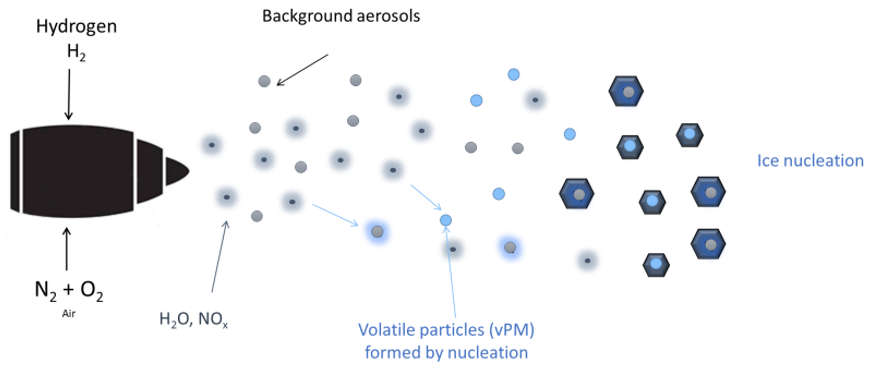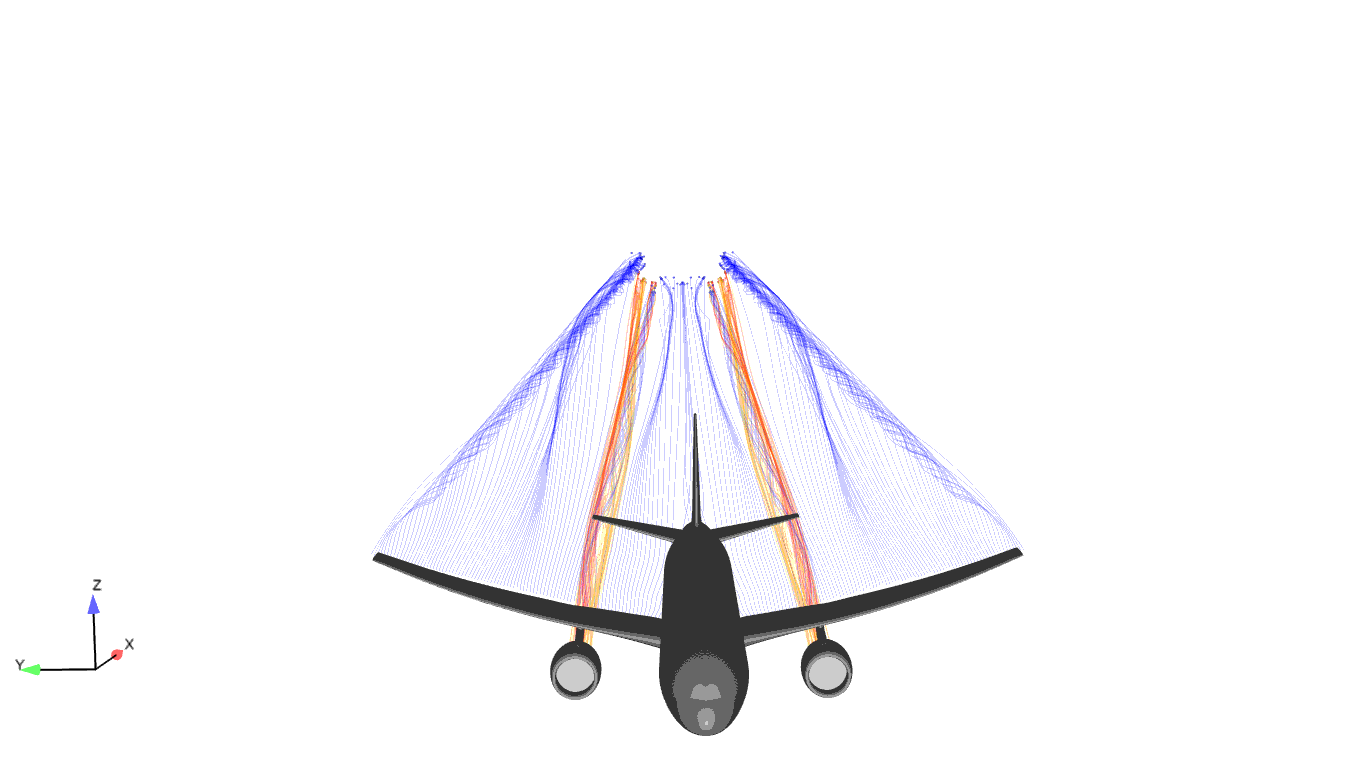The first scientific axis is devoted to the study of the formation, ageing and characteristics of condensation trails (contrails), as well as their possible evolution into induced cirrus clouds. For each of these phases, the aim will be to improve the understanding and modelling of the various mechanisms that occur in the life process of the contrail and influence its radiative properties on a climatic scale.
The work will address the different phases of contrail evolution starting from the engine outlet:
- Chemistry and microphysics of particle formation and ice nucleation in the engine plume
- Near field trail formation and interaction with the aircraft aerodynamic field (jet regime)
- Contrail evolution at intermediate scales (mainly vortex and dissipation regimes)
- Modelling of conditions conducive to the formation of persistent contrails and induced cirrus clouds, evolution of contrails at climatic scales (diffusion regime) and radiative impact of a contrail.

The first objective is to identify the respective influence of the different mechanisms that can occur as a function of the chemical composition of the fuels used.


The second objective is to improve the modelling integrated into the CEDRE code and to calibrate the code and the numerical approaches (turbulence models, meshing) used to simulate the mixing of the engine jet and its interaction with the aircraft wake on the basis of experimental results. A specific wind tunnel test is planned to acquire experimental data.
The third objective is to study, firstly, the influence of mixing mechanisms and aircraft configuration on the formation of contrails, and secondly, to evaluate the possibilities of action on the wake to influence the evolution of contrails.

The fourth objective is to better understand the influence of the near field and the aircraft configuration on the large-scale properties of contrails, an influence that remains poorly understood to date.
The fifth objective is to simulate the fate of contrails at the synoptic scale.

The sixth objective is to compare several numerical methods for solving the radiative transfer equation to make precise calculations of radiative transfer at the scale of a contrail and/or cirrus cloud.
